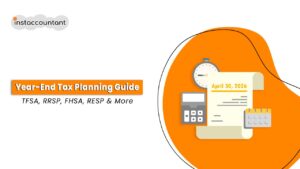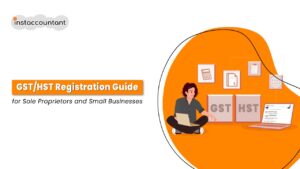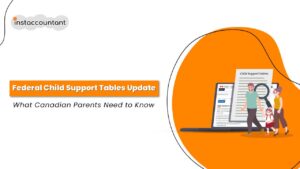Are you ready to turn your dream of homeownership into reality? With a First Home Savings Account (FHSA), you can start saving for that perfect home while enjoying fantastic tax benefits! This account is specially designed for first-time homebuyers, helping you build your savings faster.
Let’s dive into the ins and outs of opening your FHSA and how to make the most of it!
What is an FHSA?
So, what exactly is an FHSA? Think of it as a hybrid between a Registered Retirement Savings Plan (RRSP) and a Tax-Free Savings Account (TFSA), but with one focus: helping you buy your first home.
Key Features:
- Tax-Deductible Contributions: When you contribute to your FHSA, you can deduct that amount from your taxable income. This means you could potentially lower your tax bill significantly each year, leaving more money for your savings.
- Tax-Free Growth: Any interest or investment income earned within your FHSA is tax-free, as long as you use the funds for your home purchase. This allows your savings to grow faster compared to standard savings accounts.
- Flexible Withdrawal Options: Need to access your funds? Withdrawals are tax-free and penalty-free as long as they go towards your first home purchase, giving you financial flexibility when you need it most.
How to Open Your FHSA: A Step-by-Step Guide
Ready to open your FHSA? Here’s a step-by-step guide to help you through the process.
Step 1: Contact Your Financial Institution
- Research Options: Different banks and credit unions have varying FHSA products. Take some time to compare interest rates, fees, and account features to find what best fits your needs.
- Ask About Account Features: Inquire about additional perks like online banking capabilities, mobile app features, and customer support to ensure you have a seamless banking experience.
Step 2: Gather Necessary Documents
- Social Insurance Number (SIN): This is crucial for tax purposes. Keep your SIN secure to protect against identity theft while ensuring you can properly manage your account.
- Date of Birth: Your date of birth helps verify your eligibility as a first-time homebuyer. Make sure to have it handy when filling out forms.
- Eligibility Documents: Common requirements might include proof of residency and recent financial statements. Having these ready can speed up your application process.
Step 3: Designate a Beneficiary
- Why It Matters: Designating a beneficiary ensures your savings go to the right person without the hassle of probate, which can be time-consuming and costly. It’s a smart move to safeguard your hard-earned savings.
- Review Regularly: Life changes, such as marriage or family additions, may prompt you to update your beneficiary designation. Regular reviews can help keep your plans aligned with your current situation.
Step 4: Complete the Application Process
- Fill Out Forms Accurately: Take your time to double-check your personal information. Errors can lead to delays, and you want to ensure a smooth opening process.
- Understand Terms and Conditions: Before signing, carefully read the account agreement. Look for any fees or restrictions on withdrawals, as understanding these details can prevent surprises later.
Step 5: Start Saving!
- Set Up Automatic Contributions: Automating your savings can simplify the process and help you stick to your financial goals. It’s an easy way to ensure you’re consistently contributing without even thinking about it.
- Monitor Your Account: Regularly checking your balance and investment performance keeps you informed about your progress and allows you to make adjustments if necessary.
Important Considerations
- Tax Filing Requirements: Even if you don’t contribute in the year you open your FHSA, it’s essential to file Schedule 15 (FHSA Contributions, Transfers and Activities) with your tax return. This informs the CRA that your FHSA is active, ensuring you don’t miss out on any benefits.
- Contribution Limits: Keep an eye on the annual FHSA contribution limit (currently $8,000) and the lifetime limit (currently $40,000). Understanding these limits helps you maximize your savings and avoid any penalties.
- Investment Options:
- Permissible Investments: Depending on your financial institution, you may have access to a range of investment options like stocks, bonds, and mutual funds. Diversifying your investments can potentially increase your returns.
- Diversification Strategy: Think about your risk tolerance and timeline when choosing your investments. A well-balanced portfolio can help you navigate market fluctuations while working towards your savings goals.
- Withdrawal Conditions: To enjoy the full tax benefits of your FHSA, make sure that any withdrawals are strictly for your first home purchase. Familiarize yourself with the rules to avoid unintended tax consequences.
Tips for Maximizing Your FHSA Savings
- Automate Contributions: Setting up automatic contributions can take the pressure off and help you save consistently. You won’t have to think twice about it, which makes sticking to your savings plan a breeze.
- Stay Informed: The financial landscape can change, so staying updated on tax laws and FHSA regulations is crucial. Subscribing to financial newsletters or consulting with your bank can keep you in the loop.
- Consult an Expert: If you’re feeling overwhelmed or unsure about your investment options, reaching out to a financial advisor can provide tailored guidance. They can help you create a personalized strategy to meet your goals.
Conclusion
The First Home Savings Account is your ticket to making homeownership a reality! By following these steps and leveraging the expert tips outlined here, you’ll be well on your way to building your dream home fund. If you have any questions or need assistance, feel free to reach out to our expert accounting team. We’re here to support you on your journey to homeownership!




